Frost Protection - UTL Repository
Frost Protection - UTL Repository
Frost Protection - UTL Repository
You also want an ePaper? Increase the reach of your titles
YUMPU automatically turns print PDFs into web optimized ePapers that Google loves.
]<br />
F R O S T P R O T E C T I O N : F U N D A M E N T A L S , P R A C T I C E A N D E C O N O M I C S<br />
[<br />
Over-plant conventional sprinklers<br />
Over-plant sprinkler irrigation is used to protect low-growing crops and<br />
deciduous fruit trees with strong scaffold branches that do not break under the<br />
weight of ice loading. It is rarely used on subtropical trees (e.g. citrus) except for<br />
young lemons, which are more flexible. Even during advection frosts, over-plant<br />
sprinkling provides excellent frost protection down to near -7 °C if the<br />
application rates are sufficient and the application is uniform. Under windy<br />
conditions or when the air temperature falls so low that the application rate is<br />
inadequate to supply more heat than is lost to evaporation, the method can cause<br />
more damage than experienced by an unprotected crop. Drawbacks of this<br />
method are that severe damage can occur if the sprinkler system fails, the method<br />
has large water requirements, ice loading can cause branch damage, and root<br />
disease can be a problem in poorly drained soils.<br />
Application rate requirements for over-plant sprinklers differ for conventional<br />
rotating, variable rate, or low-volume targeted sprinklers. As long as there is a<br />
liquid-ice mixture on the plants, with water dripping off the icicles, the coated<br />
plant parts will be protected. However, if an inadequate precipitation rate is used<br />
or if the rotation rate of the sprinklers is too slow, all of the water can freeze and<br />
the temperature of the ice-coated plants can fall to lower temperatures than<br />
unprotected plants.<br />
Conventional over-plant sprinkler systems use standard impact sprinklers to<br />
completely wet the plants and soil of a crop. Larger plants have more surface<br />
area, so a higher application rate is needed for tall plants than for short plants.<br />
For over-plant sprinklers to be effective, the plant parts must be coated with<br />
water and re-wetted every 30 to 60 seconds. Longer rotation rates require higher<br />
application rates. Also, bigger plants require more water to coat the plants. See<br />
Table 2.1 for guidelines on application rates for various plants.<br />
Sprinkler distribution uniformity is important to avoid inadequate coverage,<br />
which might result in damage. If cold air is known to drift in from a specific<br />
direction, increasing sprinkler density on the upwind edge of the crop or even in<br />
an open field upwind from the crop can improve protection. In most cases, the<br />
sprinkler heads should be mounted at 30 cm or higher above the top of the plant<br />
canopy to avoid the plants blocking the spray. For frost protection, specially<br />
designed springs are often used, which are protected by an enclosure to prevent<br />
icing of the heads. Clean filters are needed to be sure that the system operates<br />
properly, especially when river or lagoon water is used.<br />
30


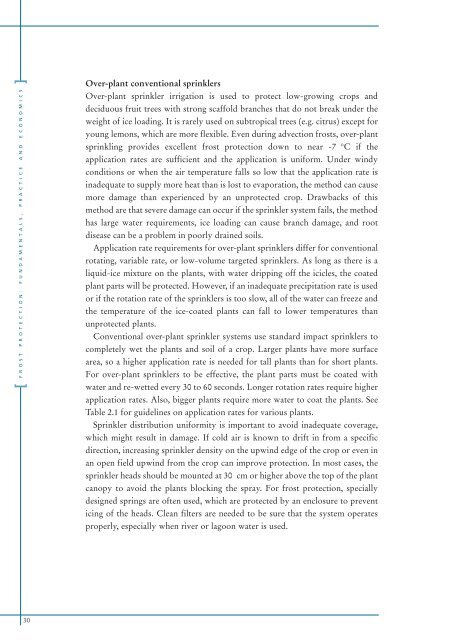
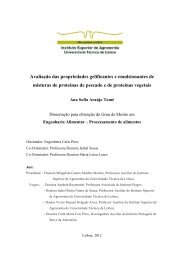
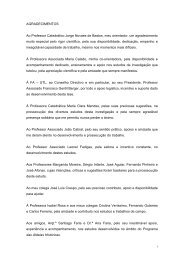
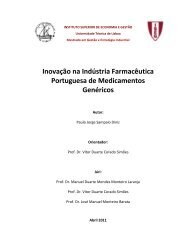
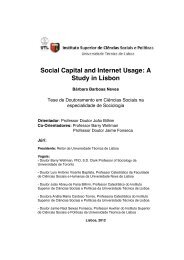
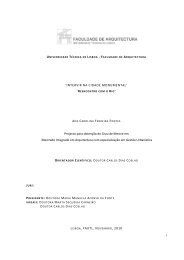
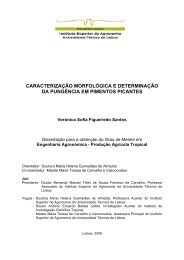

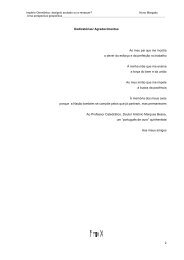
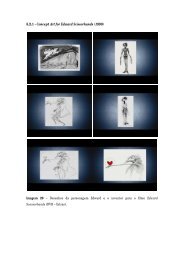
![Tese - Es..[1].pdf - UTL Repository - Universidade Técnica de Lisboa](https://img.yumpu.com/25707135/1/184x260/tese-es1pdf-utl-repository-universidade-taccnica-de-lisboa.jpg?quality=85)


